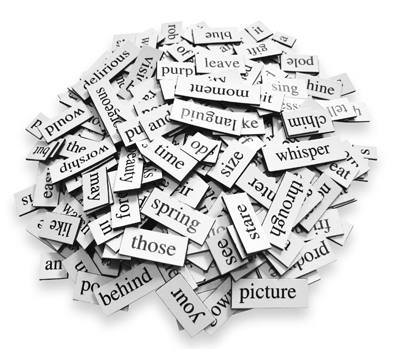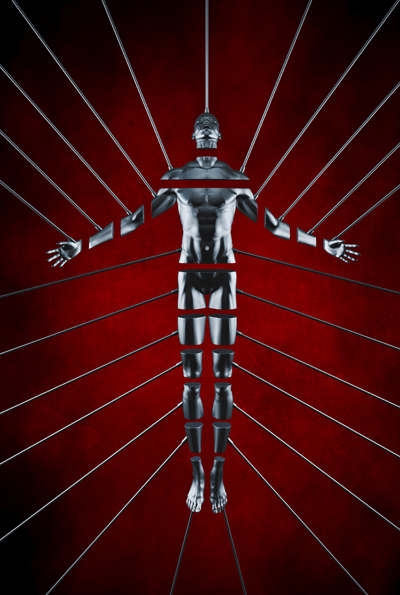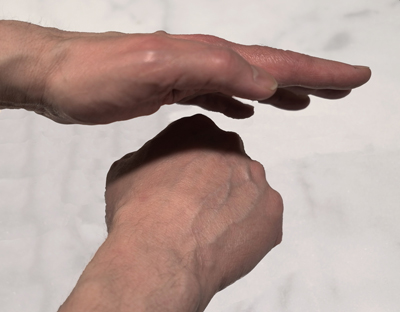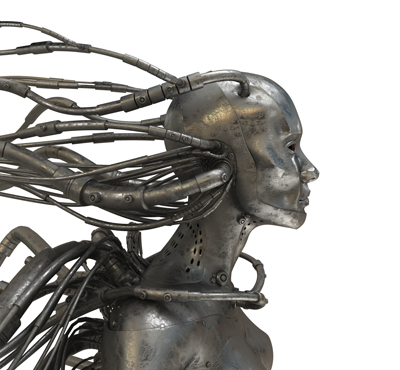
|
For the last dozen years, I have self-published about ten of my novels, in addition to having been traditionally published through Baen Books in New York. So, I would like to offer you all some of my experiences. But note that I have also worked in two publishing houses—for a university press and a trade book publisher—so I have specialized expertise in copy editing, text conventions, book design, and formatting that other authors may lack.
To self-publish means to sell your books directly to readers through Amazon’s Kindle program, Barnes & Noble’s Nook, and/or Apple’s iTunes, rather than submitting a manuscript to a publishing house, generally through an agent, in order to have your book edited, produced, marketed, and sold. The costs of self-publishing are minimal if you are prepared to do a lot of the work yourself, but they can be quite steep if you rely on the new marketplace of professionals ready to help the self-publisher for a fee.
There is an alternative, of course, the old “vanity press.” In this scenario, a firm would represent itself as a publisher and employ editors, designers, and printers, offering to produce finished copies of your book—for an up-front fee. You would then get a truckload of 3,000 or 5,000 books that you would have to market and distribute yourself. That might take less work on your part—and “acceptance” of your manuscript would be guaranteed—except that you would have to work doubly hard on the distribution end to get rid of all those copies. But traditional publishers are becoming a lot more like a vanity press in that they generally don’t make much effort to market your book. Gone are the days when they would pay to send an author—and certainly never a new author or one with a one-off book—on a “book tour” to market their book with press appearances and radio and television interviews. There’s a whole story about why traditional publishing is dying, but that’s not what you want to hear.
The first step in self-publishing is that you need a manuscript. Unless you are a former book editor, like me, or very good with grammar, punctuation, and style as represented in the Chicago Manual of Style (the bible of the publishing industry), you will need to hire a book editor. Having done the job for several years, I do my own editing, usually as I write, although I rely on a circle of “beta readers” to backstop me on plot holes, inconsistencies, and the occasional typo that gets through re-reading the text a dozen times.1
Book editors may offer structural and substantial advice—things like those plot holes and inconsistencies—or they may just do “period-and-comma” or copy editing. Or sometimes they do both. You can expect to pay a fee per number of words or per page for this service—I’ve heard $10 per page quoted, but that was years ago in another economic time. Prices will vary, as does the quality of the editor’s contribution. But you will probably need an editor, as readers are averse to and give bad reviews to books with obvious holes, errors of fact, inconsistencies, and too-numerous typos.
Once your manuscript is in shape, you need to decide how you will want to publish. In times past (the last ten years or so) self-publishing has meant producing an ebook for online, digital distribution. This involves coding the manuscript in HTML format, dividing it into chapters and other book parts in formal .html file formats, and knitting the whole thing together with a “cascading style sheet” (CSS), a table-of-contents and navigation control file (toc.ncx), and a “manifest” (identifying all those pieces and parts in the folder) into an ePub format. I learned HTML coding, acquired the blank .html file form, learned about ePubs and their parts, and got the small programs that compress the folder accurately and validate the ePub for distribution. And then, about ten years ago, I started making my own ebooks. The software application of choice for producing HTML files is Adobe DreamWeaver—which I only use after I put the basic HTML text treatments (smart quotes, italics, boldface, etc.) into the Word file.2
If you don’t want to do all this, then you can hire a programmer to do it for you—and again, costs and quality vary. I do it myself because I’m finicky, and I control the book’s content and appearance at all times. Also, I can go back and rework the ePub files anytime I find an error without having to apply to a third-party contractor. There are also mechanical means of producing ePubs: some online programs will take your MS Word document or other text and turn it into HTML. But without specifying your embedded formats in a CSS file, they tend to turn every paragraph into a block of text that includes every bit of formatting from Word or other word-processing format in the first 200 to 400 or so characters. That can be extremely confusing to try to go into and edit yourself. And automatic programs sometimes make stupid mistakes. Besides, the formatting you’ve chosen for your manuscript in Word may not be the format and look you want in a published book. Again, I like control.
But that’s for producing ebooks. Kindle and Nook now also offer to produce print-on-demand (POD) paperbacks for you. (I tend to stay away from Apple’s iBooks, because they want you to use their own book formatter, and the end user agreement grants them ownership of the contents—Ewww!) PODs are printed books in the format as “quality” or “trade” paperbacks, with better type and paper than in what we used to call “pulp.” But instead of being printed on a press in a run of 10,000 or more, they are laser-printed and perfect-bound to order when the customer buys the book.
To prepare for POD, you need to create two .pdf (portable document format) files that are sized to your chosen page size. One file is for the internal text, which might be produced on plain white or natural beige or even glossy finished paper; the other is for the cover with front, spine, and back in one file to wrap around the interior pages, and this will be on heavier, shiny or matte finished stock. The software application of choice for producing these .pdf files is Adobe InDesign. To do this yourself, you should be familiar with the mechanics of book design: page numbering, running heads and footers, bastard title, title page, copyright page, etc. (For example, if a verso page is blank following a recto section break, do you give it a running head or do you leave it blank? And do you include the verso page’s putative page number in the numbering of book pages or skip over it?) If you’re not experienced with all this, you need to hire a book designer, which may be different from your HTML programmer and text editor. Or some people may now offer combined services, in one person or as a team.
Having a cover implies cover art. You’ll need a cover image for both the ePub and the POD and for use in displaying your book on the Amazon, B&N, or other distributors’ web pages. I generally find an image I like through istockphoto.com, buy the editorial rights (generally a couple of bucks off my credit account), and work up a title treatment, spine, back blurb, etc. myself. The application of choice for this is Adobe Photoshop. If you’re not skilled at cover design—and I don’t say I’m a skilled artist, just that I do it—then you might hire an artist or see if your preparation team includes this work. Again, quality and costs vary, and hiring someone to paint or compose a unique image for your cover can be quite expensive. In any case, make note of the artwork’s provenance, because you will want to cite it on the copyright page.
Okay, you’ve got all the parts of the ePub and POD together, what comes next? Two things—copyright and International Standard Book Number (ISBN). Authors can self-publish without them, but these protect your rights to the product. The ISBN is issued by Bowker, who used to catalogue every U.S. book in print and has now become the country’s repository of ISBNs through myidentifiers.com. You become the publisher when you register with them, and you buy your blank ISBNs singly or in groups (I get ten at a time for $250). You need a separate ISBN for the ePub and the POD versions because the identifier applies to the book’s format and “edition” (also when a later significant revision—not just fixing a type—or version is issued), even if they all include the same text. Bowker will require you to fill out various information choices on the book’s format, publication date, and general audience details for each version.
Copyright is issued by the U.S. Library of Congress, which works mostly online these days at copyright.gov. Filing copyright for a book online costs $35 (more if you work through mail-in application), and you do this once for all versions, because you are establishing that you own the words and, if applicable, the cover art but not the book design or format. You will then be required to submit the “best” copy of the work, which means two copies of the POD in actual paper, if you are making one, and otherwise the electronic ePub.
Then you publish—and this part is actually “free.” Kindle, Nook, and iTunes don’t charge up-front for their services, but they will require you to register with them and sign a distribution agreement. You are the publisher, not them, and you are liable for actions against the work like defamation and copyright infringement. Your distributors are just making available the book content that you have supplied. Generally, the agreement also states that you will not sell the book for less on another platform, although Kindle Direct Publishing has programs to temporarily reduce the list price by offering specials. You can also install choices, such as digital rights management (DRM) that keep buyers of your ePub from trading the file around with their friends, although some of these services also support limited sharing and some will even let the reader “rent” the book and then return it (Ewww!).
With all of these distributors, you submit the ePub and PDF files (if you are making a POD), along with cover art, blurb, author’s bio, details about the intended market and audience, and keywords to help people find your book.3 In each case, the distributor holds your book electronically and only sends it—or makes a one-off laser print and perfect-bound copy of your POD—when the reader purchases your book. By not holding an inventory of printed books, like traditional publishing, these services get around the inventory taxes that, subsequent to a case called Thor Power Tools in U.S. tax court, have eaten the traditional publishing business alive. They also get around the issue of shipping loads of books to stores on consignment and taking back “returns” or declaring them as “remainders” if the books don’t sell.
The payment you get with publishing through Kindle, Nook, and iTunes is a “royalty” on each sale that might be as much as 65% or 70% or more of the cover price. You can name any price you like, but I prefer to keep mine small. I price my ePubs at $2.99—about what we used to pay for a paperback, back when. My PODs I price at a buck or two above the distributor’s cost to produce, which can be quite high depending on page length and choice of paper. My novels cost about $12 to $15 per copy to produce, compared to just pennies on a printing press doing a run of 10,000 to 20,000 copies. All of these costs are stated when you set up your book, and the price is automatically adjusted for sales to foreign markets, including VATs and other taxes. I’m happy getting a buck or two per book sold, which is better than getting the 5% royalties I received from traditional paperback publishing. But, as in traditional publishing, you still have to do your own promotion and marketing.
Promoting your books is another cost—more in terms of time than money. I maintain this site, www.thomastthomas.com, as my author’s website, which I keep active with blogging, formerly every week and now a couple of times a month. I copy the blogs to a blogging service, www.blogspot.com, to which people can subscribe, and advertise them with images and blurbs on my Goodreads, LinkedIn, Twitter, and Facebook pages. That’s all pretty standard. I probably should be angling for podcasts and book reviews, but I don’t. What the secret may be to successfully marketing your book to a wider audience to win fame, fortune, and acclaim, nobody knows for sure. It generally helps if you are already a celebrity, but who among us is that?
Self-publishing is a process that requires almost as much skill as writing a good book in the first place. You can also find good editors, programmers, page formatters, and artists—or services that offer all four in one package—but they will cost you. And you can also find a number of less-than-good services that prey on the huge market of people who want to get their book published and won’t know the difference.
Since I am basically a one-man-band of self-publishing, I sometimes offer to my friends the option of having me edit and prepare their books for free, because I’m interested in helping them. Or because I’m interested in the project. But I’d rather write my own books than set up in business to do this for a fee.
1. And don’t get me started on autocorrect and the grammar and spelling checks incorporated in most word-processing software like MS Word. They have a limited and mostly obtuse sense of vocabulary and the grammatical and punctuational instincts of a mean-spirited third-grade teacher. Yes, there are rules for these things—and a professional author knows when to break them.
2. Before this, in the decades between my last traditionally published novel and my first ebook, I would turn the MS Word manuscript into a large, Adobe Acrobat .pdf file and offer it for free (“I supply the text, you supply the paper”) on my author’s website.
3. I’ve seen Kindle offer to make an ePub out of a submitted word-processing text or POD files, but I’ve never tried it. Again, mechanical conversions can make mistakes, and I’m picky.









